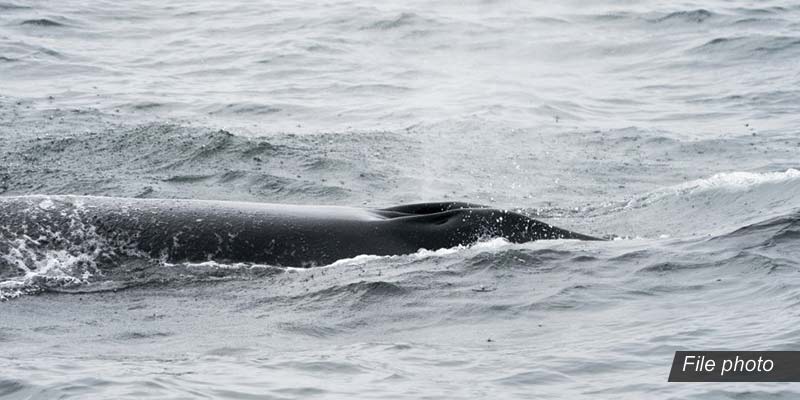- World
- May 15
Sei whales reappear in Argentina’s coast after 100 years
• Giant blue-grey sei whales that vanished from Argentina’s Patagonian coast a century ago due to hunting are starting to flourish once again, demonstrating how species can recover when measures to protect them are put in place.
• In the 1920s and 1930s regular whaling ships along the shores of Argentina, and beyond, saw populations dwindle.
• In the last 50 years, global bans on commercial whaling have helped populations of sei and others revive.
• They disappeared because they were hunted, they did not become extinct but were so reduced that no one saw them.
• It has taken decades for numbers to recover enough that the whales had again been sighted, which only started to happen again in recent years.
• After hunting that reduced the population of sei whales to a minimum, almost 100 years later, this population started to bounce back and now they come to the same places they used to before they had been hunted.
• A team from Argentine state science body CONICET last month worked to fit some sei whales with satellite trackers to map their migration patterns.
Sei whales
• Sei whales (Balaenoptera borealis) are the third largest whale species after blue whales and fin whales.
• They are one of the fastest whales, reaching speeds of up to 50 km per hour.
• Sei whale is listed as ‘Endangered’ on the IUCN Red List of Threatened Species.
• This oceanic giant has a long, slender, streamlined body. It is found in temperate waters of all oceans, feeding on zooplankton, schooling fish and sometimes even squid.
• Daily dietary intake for a sei whale is estimated at one tonne.
• Often found with pollock in Norway, the name “sei” comes from the Norwegian word for pollock, “seje”.
• The global sei whale population was greatly decreased by historical commercial whaling during the 19th and 20th centuries. An estimated 300,000 sei whales were killed for their meat and oil.
• Member countries of the International Whaling Commission (IWC) agreed to cease sei whale catches in the North Pacific in 1975 and in the Antarctic in 1979. In 1982, the IWC decided to cease commercial whaling on all whale species and populations from the 1985-1986 season onward.
• The average adult male is 46 feet in length and weighs about 14 tonnes. The average adult female is about 49 feet long and weighs in at 17 tonnes. At birth, sei whale calves are 15 feet long and weigh about one tonne.
• Sei whales are migratory animals and believed to move between feeding and breeding grounds.
• They breed primarily in the winter months, and every 2-3 years mature females give birth to one calf after a gestation period of 11-12 months.
Manorama Yearbook app is now available on Google Play Store and iOS App Store

